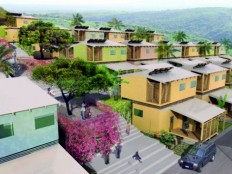|
||||||||||||||||||
|
|
Haiti - Reconstruction : Comprehensive Plan for the reconstruction of Jacmel 19/09/2011 12:29:32
"The concept includes an urban masterplan, and a proposal for prefabricated houses, in which the building shell is industrially manufactured in Austria, and finished by local hand workers. In line with the content of the project, the architecture does not attempt to be spectacular. Rather, it is the holistic integration of the many levels of an urban system that makes this project interesting. More images and project description after the break. 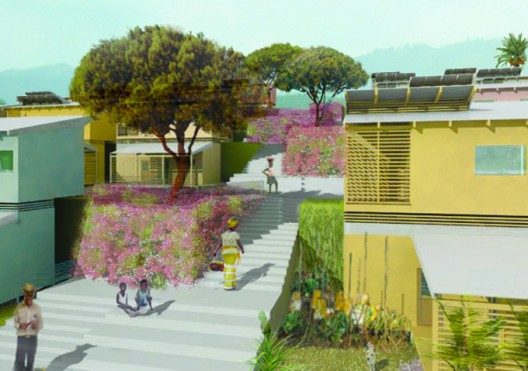 The urbanism proposes an ecologically sustainable planning for a topographically challenging tropical site. We have divided the site into three basic zones, depending upon their topographic qualities. 1) Steep hillsides, which are not buildable, are to be reforested. 2) Valley bottoms, which are also not buildable due to flash-flood dangers, will be terraced and converted to middle intensity agriculture for local consumption. 3) Ridges and plateaus are inhabitable for the built environment. 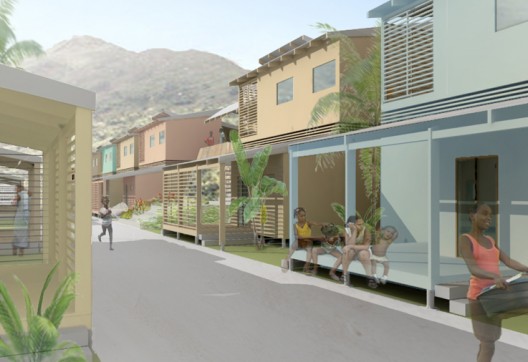 An essential objective of the planning was the construction of an affordable, ridge-top road network that linked the built-up areas with each other as well as to the access road Route 204 connecting to Jacmel. Along these roads, we developed a series of neighborhoods, each with their own school, market and commercial center. These are in turn linked to a central commercial and administration center adjoining a light industrial district which will house [for example] textile shops. 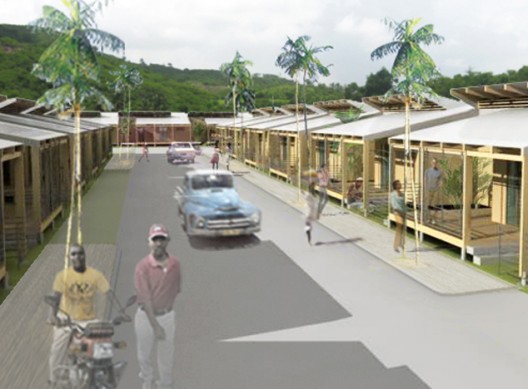 We have been working with representatives of the UNO in order to develop a socially responsible urban structure; child care (the light industrial workforce is largely female and child care is a burning issue), social centers and educational facilities are central aspects of the planning concept. 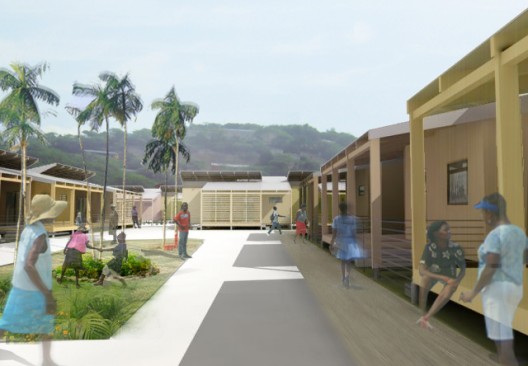 The spatial structure of the neighborhoods is determined by their topographic conditions. In the flatter areas (inclination zones I+II) the streets are laid out perpendicular to the main street in a classic gridiron system with interspersed green parks; the houses are one-story high. In the steeper areas (inclination zones III+IV) the streets track the site contours and are interconnected by a series of planted stairs; the two-family houses are two stories high and offset so that their entries address the terracing of the streets. 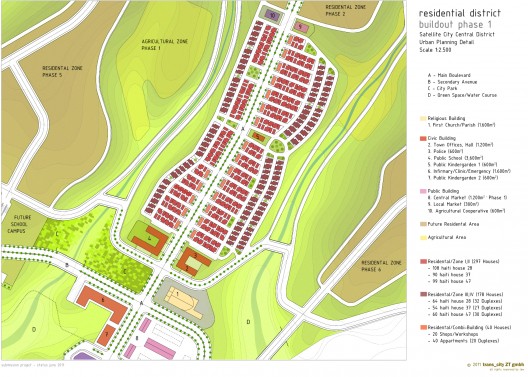 The architecture of the individual houses should be simple and directed to the needs and social practices of the Haitian people, as well as the tropical climate of the region. In final build-out houses will be built using local materials and techniques, but in the critical first phase, we propose using prefabricated, massive wooden components, produced in Austria, to build the houses. 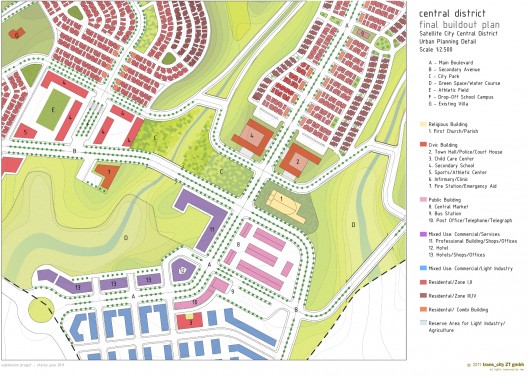 The ambition is to use Austrian know-how to alleviate this extreme housing crisis. The Austrian timber industry is a world leader in the advanced manufacturing of massive wooden construction. Massive timber panels are extremely stable, therefore earthquake and hurricane resistant; when properly treated and constructed, they are highly impervious to termites. 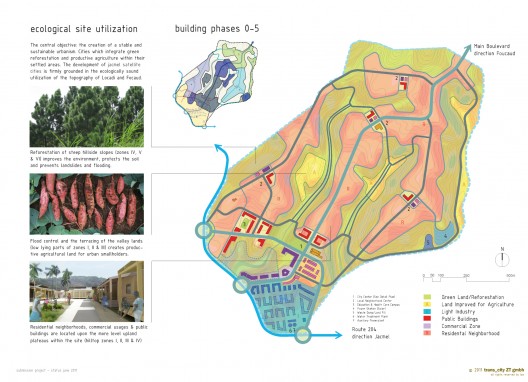 Prefabricated parts will be transported to Jacmel in containers, and will be unpacked and the containers will be recycled as building blocks for the light-industrial workshops: recycling containers is the core competence of our NGO umbrella organization. The houses will be assembled in Jacmel into unfinished shells, which will then be sold or given (depending upon need) to the inhabitants. 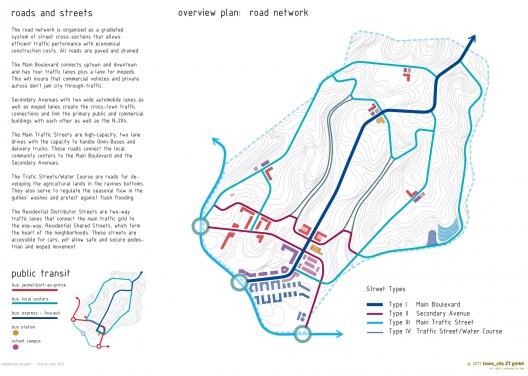 In order to both spur the local economy and to increase owner identification with the new house – which is a serious issue in such projects – vouchers will be issued for contracting final build-out (painting, tiling, security and sun grates, etc.) to local handworkers. The goal is to insure the production of as much local added value as possible – and generate jobs and contracts for local handwork businesses. 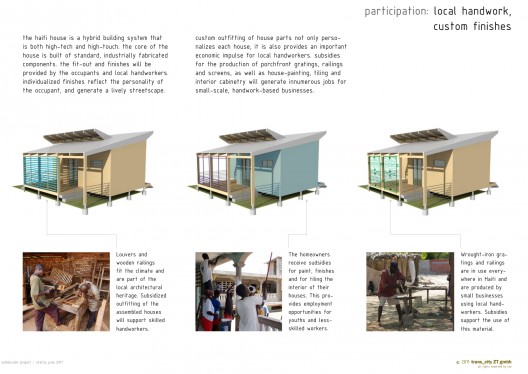 The houses are based upon the classic Creole Cottage of New Orleans and the American South. We have done a number of years of urban and typological research into the New Orleans tradition, going back to the years before Katrina. These New Orleans typologies originated in the Caribbean and most especially in Haiti; therefore, we deemed it appropriate to use these types as a basis for the Jacmel project. 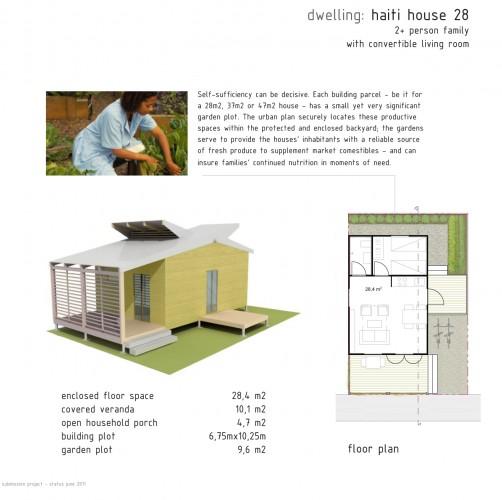 We have three house sizes, all of which use the Creole Cottage typology with its generous front porch. The front porch is an important attribute of this architecture. As Caribbean life takes place out of doors, we believe that the porch, with its advantage of social connectivity, is the ideal element for this culture and climate. 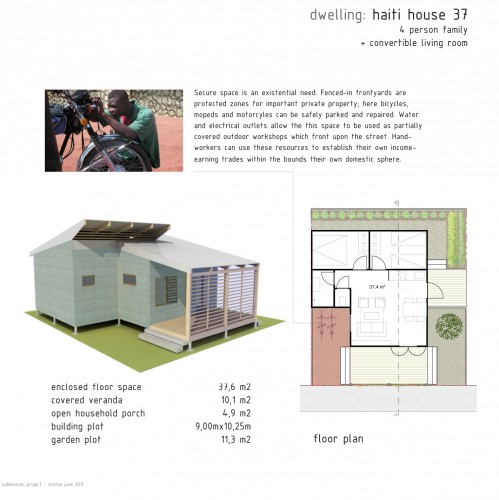 Each house has a fenced-in yard with storage and the possibility of a covered, outdoor workshop on the street side, as well as a private garden to the rear. Both of these design facets are intended to provide a spatial framework allowing increased self-sufficiency for the inhabitants and represent a connection back to the urban design principals of social-interconnectivity and individual self-sufficiency, which we believe provides the backbone for a socially sustainable settlement. Photos : Courtesy of Trans_City Architecture and Urbanism HL/ HaitiLibre
|
|
|
Why HaitiLibre ? |
Contact us |
Français
Copyright © 2010 - 2024 Haitilibre.com |



